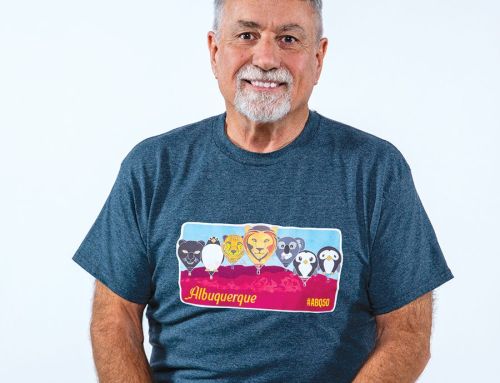By Akers Editorial
Former Big Leaguers have little to say about baseball careers
STORY: Gary Corsair
I know how I’d act if I played professional baseball.
I’d drive a car painted in the colors of the team I played for, hang a diamond-studded team logo around my neck and wear my old ball cap everywhere I went. And I’d have business cards that said: “Former Major League Baseball Player.”
I’d want everyone to know I had played in “The Show.” Wouldn’t any kid who grew up collecting cardboard heroes, dreaming of one day appearing on his very own baseball card, and listening to Tony Kubek and Joe Garigiola call the Game of the Week.
At least I thought that way until I spent time with three residents of The Villages who lived my dream. Bob Stinson, Pete Smith and Dick Lines all made it to the big time, yet each remains humble, unpretentious, and remarkably tight-lipped about what had to be the greatest years of their lives.
So, let’s go with that. You can look up their statistics, collect their baseball cards, track down interviews about their careers, but we’ll focus on who Bob, Pete and Dick are today. Because to hear them tell it, the past is past; the here and now is all that matters.
Gorrell Robert Stinson III was a first-round draft pick, caught six Hall-of-Fame pitchers, played in an American League championship series, and was a Big Leaguer for 12 years.
And he had one of the most colorful nicknames in baseball history — Scrap Iron, a moniker he earned by actually running through an outfield wall in pursuit of a fly ball, and playing with a broken jaw.
So you know the guy has stories. He has to. He played for Tommy Lasorda, for cryin’ out loud.
And yet, Stinson rarely talks about his Major League Baseball career. Twist his arm, and he might — just might — admit he was selected ahead of Tom Seaver in the 1966 amateur draft.
Stinson would rather talk about golf. In fact, he’ll go extra innings on the subject. The only thing he likes better than talking golf, is playing it, which is a big reason he moved to The Villages.
For Stinson, baseball is in the clean-up position in a batting order of things he loves. Wife Gayle leads off, golf is second, and working with kids all come before baseball.
Any day golfing is a good day. But nothing beats a day when he can combine his loves.
“I play a lot of celebrity golf tournaments that give back to the community,” Stinson said. “I go all over the country for charity.”
Scrap Iron also participates — for free — in Major League Baseball Alumni camps for children.
“I was just in Brooksville, where we had 250-plus kids. One of the kids told me, ‘I wish we had a coach like you.’ I said, ‘Well, who’s your coach?’ The boy said, ‘He’s right over there. He’s my father.’”
Of course, Stinson signs a lot of autographs at functions he attends. And he signs for free.
But it’s a different story with autograph requests that come in the mail. Stinson recently began charging $10 for his John Hancock when he thinks the request is from someone he believes sells photos or baseball cards they send to players to sign.
“My daughter called me and said, ‘Dad, you’re all over ebay. There must be 100 people selling things you’ve autographed.’ And here I was signing for free so they could make money on me. ‘My daughter said, ‘Dad, you gotta start charging.’”
So Stinson charges — reluctantly — and donates the money to local kids teams.
There is, however, one card the former switch-hitting catcher will not sign — the Bob Stinson card, No. 166 in the 1976 SSPC set.
“That’s an outlaw card,” Stinson says. “That company made $6 million in six months and the players didn’t get anything. I won’t sign that card.”
Stinson’s refusal to sign the card drew national attention in 2010 when TV personality Keith Olbermann revealed that has signed cards of every player in the set except Stinson. Olbermann was a college student when he wrote the player bios that appear on the back of the 1976 SSPC cards.
Stinson obviously has principles. Which is why he usually says “yes” to invitations to appear at baseball camps or participate in celebrity golf outings. “If it’s for charity, I try to do it.”
Helping kids is one of Stinson’s favorite things, and he likes nothing better than spending time with his grandchildren. Bob attempts to spread the love evenly among his kids and their kids, but son Kevin have the inside track on his four brothers and one sister. “My son Kevin has three boys and they’re all into baseball,” Stinson beams. “And Bo recently told Kevin that he wants to just practice baseball all year long.”
Sounds like Bo should move to Florida. “That’s what I told him,” Stinson says.
It also sounds like Scrap Iron might be sharing some of his Big League baseball stories after all.
While Stinson appeared on dozens of cards (in fact, he has three rookie cards), fellow Villager Pete Smith appeared on exactly one, No. 428 in the 1964 Topps set, which he shared with Archie Skeen.
And lately, Pete’s been seeing a lot of them. “I get about one autograph request every week. Fans send that card for me to sign. Topps must have made more of them,” he says with a laugh.
Pete’s career didn’t last long, but he made sure he’d be remembered. On Sept. 28, 1963, in a home game against the Angels, Smith started a triple play, probably the rarest feat in baseball.
Pete was definitely a top prospect. The 3.60 earned run average he posted in six games near the end of the ’63 season put him in the running for a role as starter in ’64. Unfortunately, a sore arm forced him to hang up his spikes after appearing in just seven games. “Too many curveballs too soon,” Pete says.
He punched out (on strikes) some of the game’s greatest hitters, but Pete downplays his accomplishments. “I didn’t have a career, but I had a great time.”
On field achievements aside, Smith was thrilled just to be on the roster with the likes of Carl Yastremski, Rico Petrocelli, Gene Conley, Dick Williams, Earl Wilson, and Dick Stuart. And to be managed by the great Johnny Pesky.
That was obvious when Smith — wearing an ear-to-ear smiles — joined former teammates and Pesky on Fenway Park’s fabled turf in 2012 during a celebration of the ballpark’s 100th anniversary.
“That was spectacular,” Pete said.
Pete was in the Big Leagues just long enough to gain some great stories, but you’d never know he wore a No. 49 Boston Red Sox jersey. Mr. Smith went to Boston, but he’s at home in The Villages — and not because the community has a thriving softball scene.
“I live in the here and now,” Pete says. “I play a lot of tennis and pickleball.”
And basketball. Pete has medaled in the basketball competition every year he has competed in the Florida State Senior Games. He’s especially adept at free throw shooting, where he routinely makes 22 to 24 of his 25 shots.
Richard “Digger” Lines, who lives up on the hill, is also tight-lipped about his Major League Baseball career. In fact, for years he shied away from playing softball here because he enjoys having an identity far removed from a ball… unless we’re talking about golf balls, that is.
But Digger eventually gave in, and his teammates are glad he did. The former professional pitcher is now a smooth fielding first baseman and a solid hitter.
Lines may not want to talk baseball, so we will.
Digger had a career worth talking about — a 7-7 record and 2.83 earned run average pitching for the lowly Washington Senators, who finished eighth in 1966 and sixth in ’67. And Lines was 5-2 with a 2.28 ERA in ’66 when the sickly Senators batted just .234 as a team.
Imagine what Diggers would have done with a team that could hit! Can you say Cy Young Award?
If ever a guy had a beef about being in the wrong place at the wrong time, it’s Lines. In fact, he has lots of valid, though unspoken, complaints.
Lines spent parts of 11 seasons in the Minor Leagues before making his debut at 27. How he didn’t get a call-up in ’63 (3.43 ERA in 160 innings) or ’64 (3.50 ERA in 131 innings) is a mystery. What was management thinking?!! The ’63 Senators were 56-106 with a team ERA of 4.42! The staff ace was Steve Ridzik, who won 5 and lost 6 and had an ERA of 4.82! And the ’64 team was 62-100! Surely, Lines could have helped




































Have a picture of myself with Bob Stinson on mariners photo day 1978 or 9. All the players sat up in various parts the stands and kids could get Polaroid’s with each. The longest line was for ruppert Jones, and he was great, but to this day the experience of meeting Bob is what I remember from that day. He was just so enthusiastic about the whole thing, and the picture shows it. Both of us laughing hysterically about something he said. Great memory. Thanks Bob!